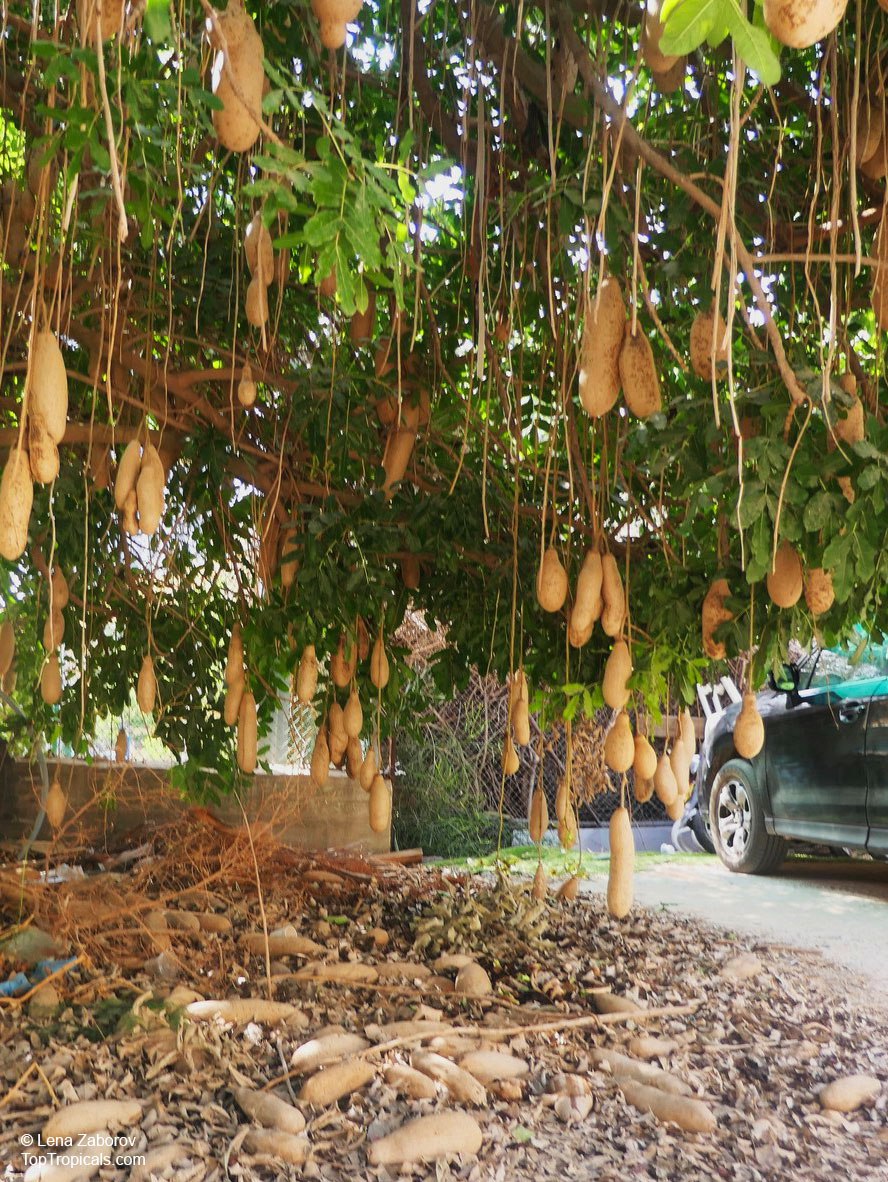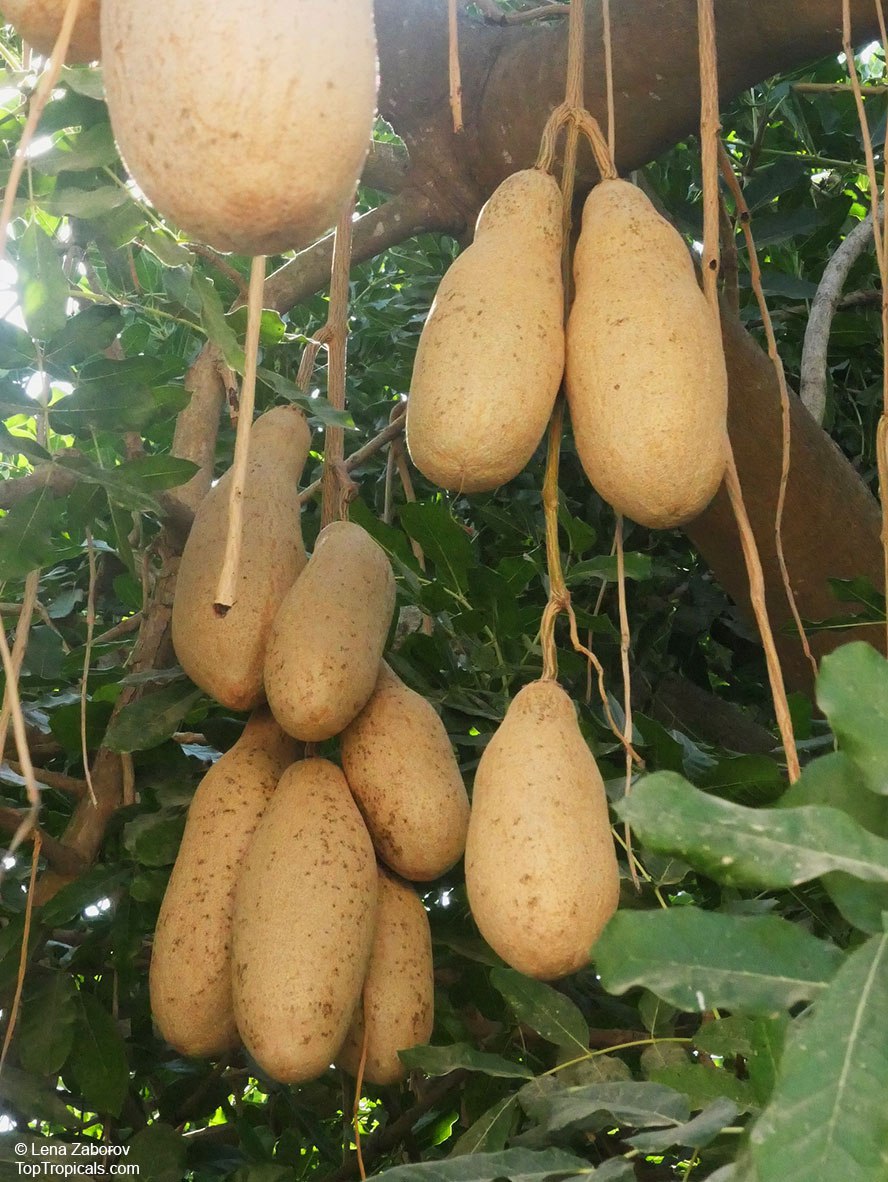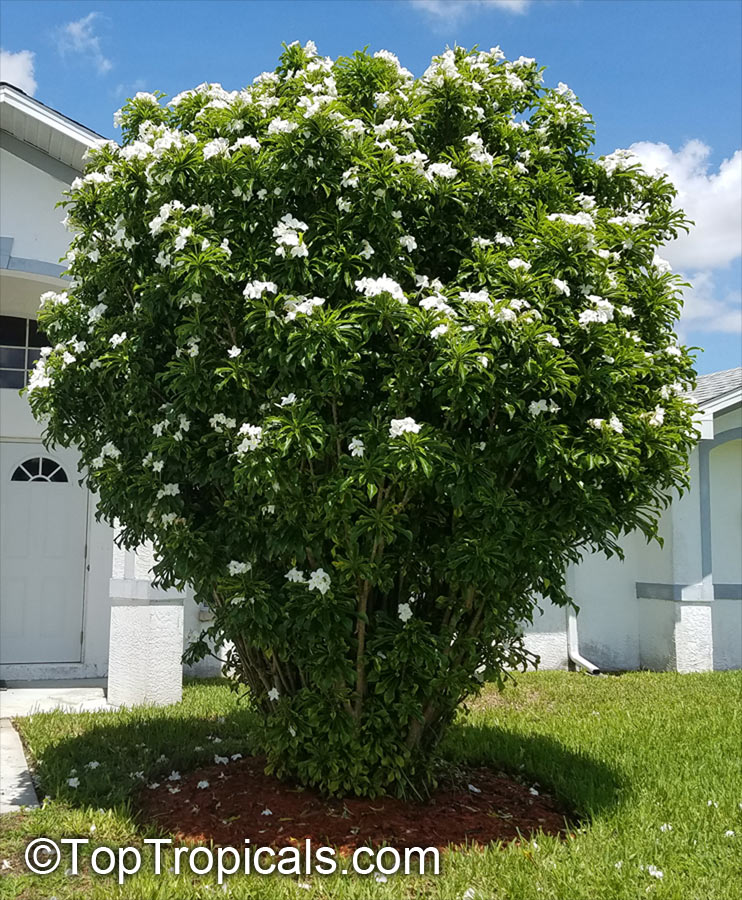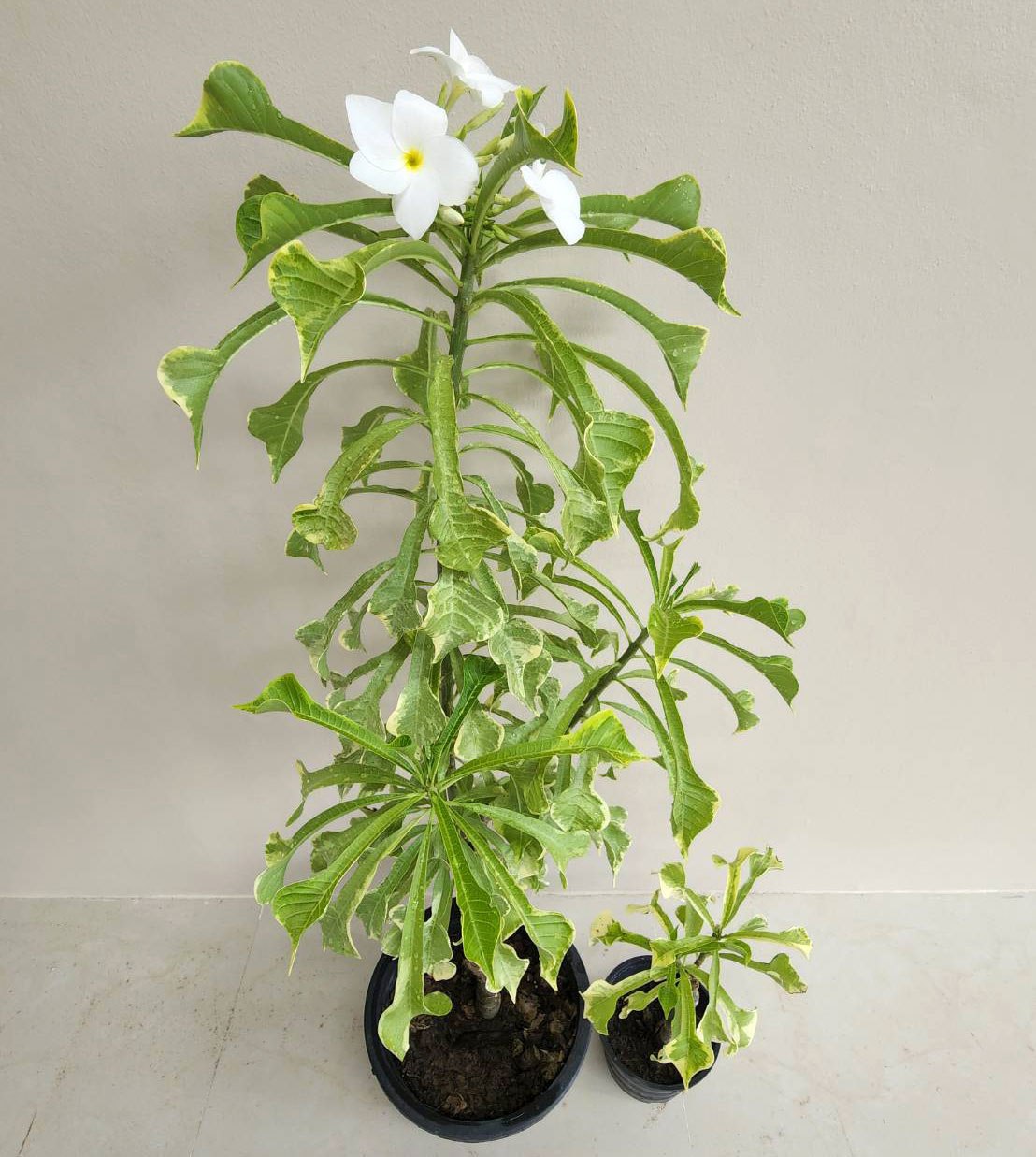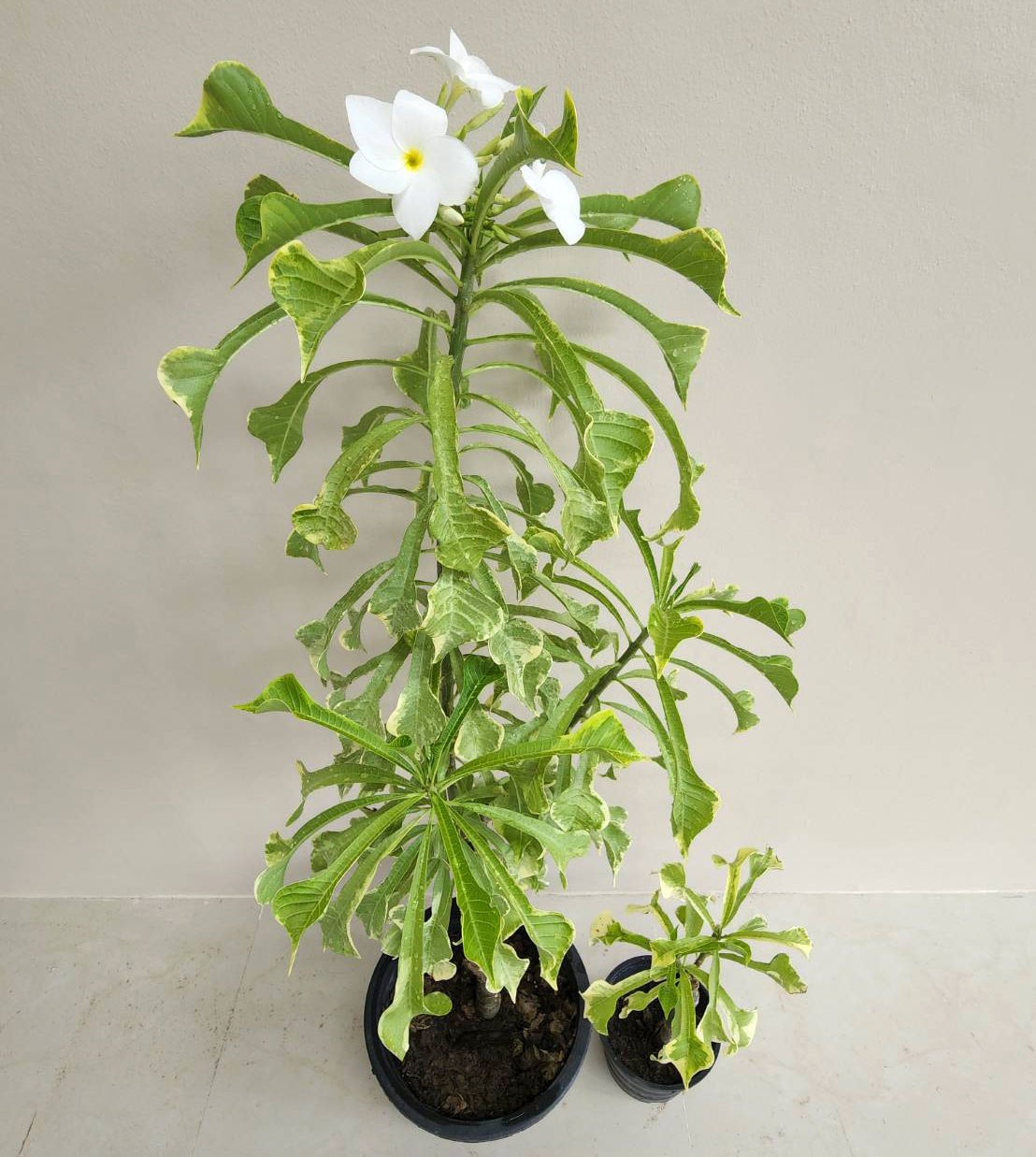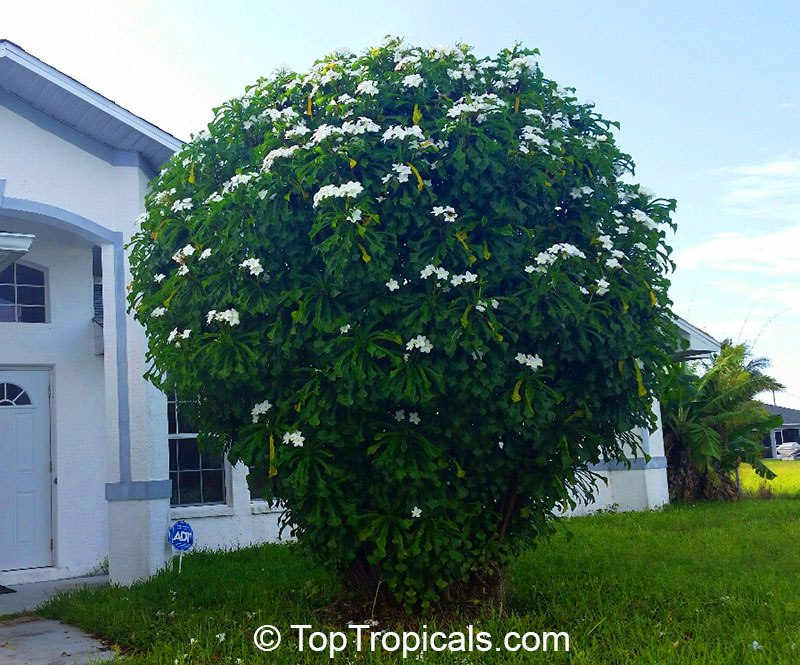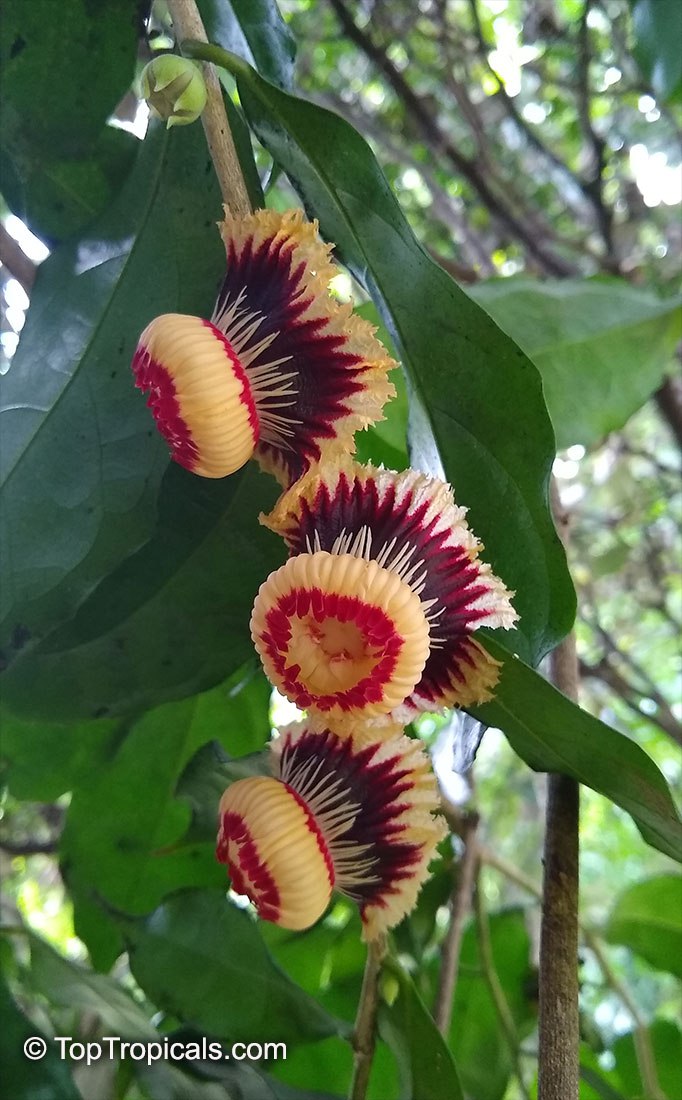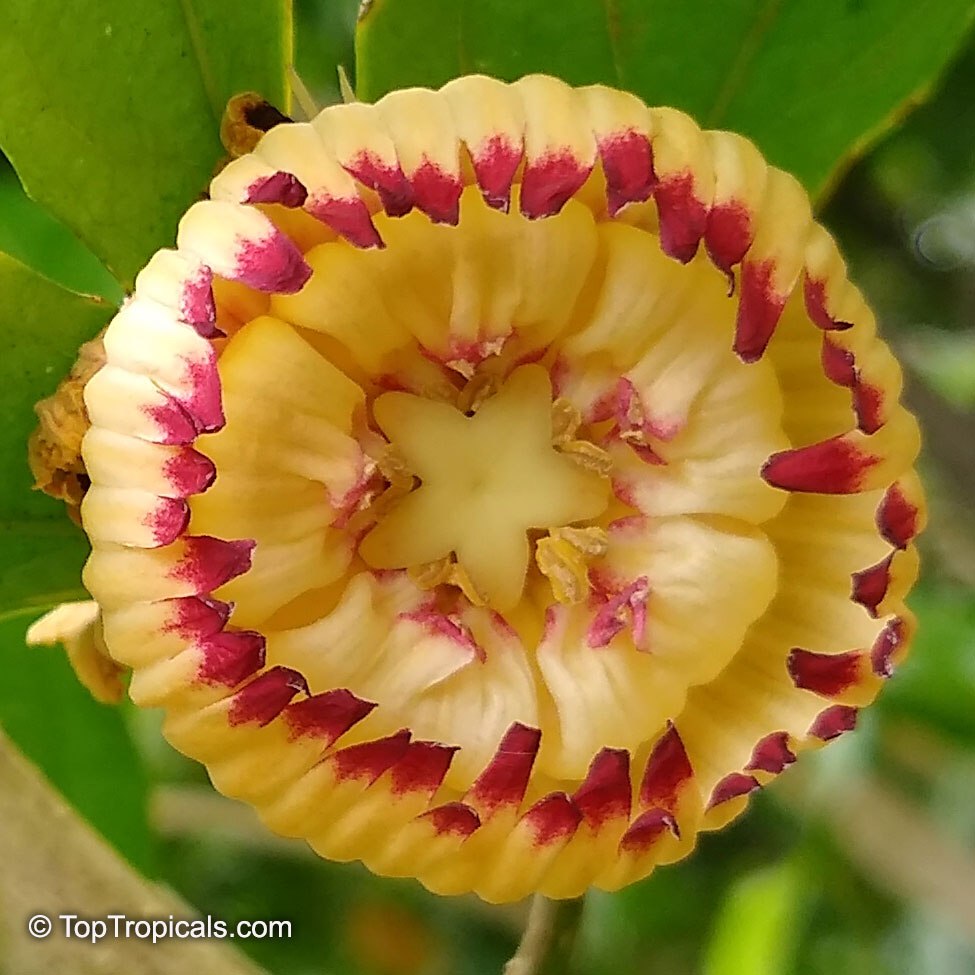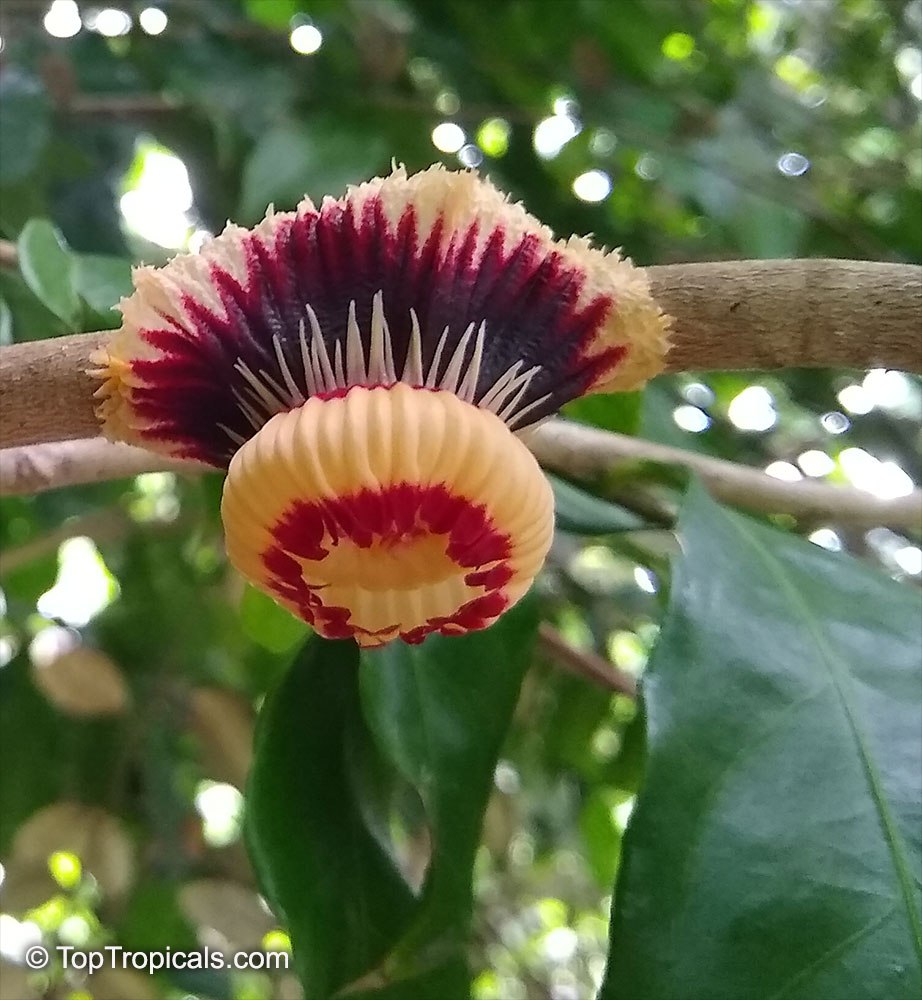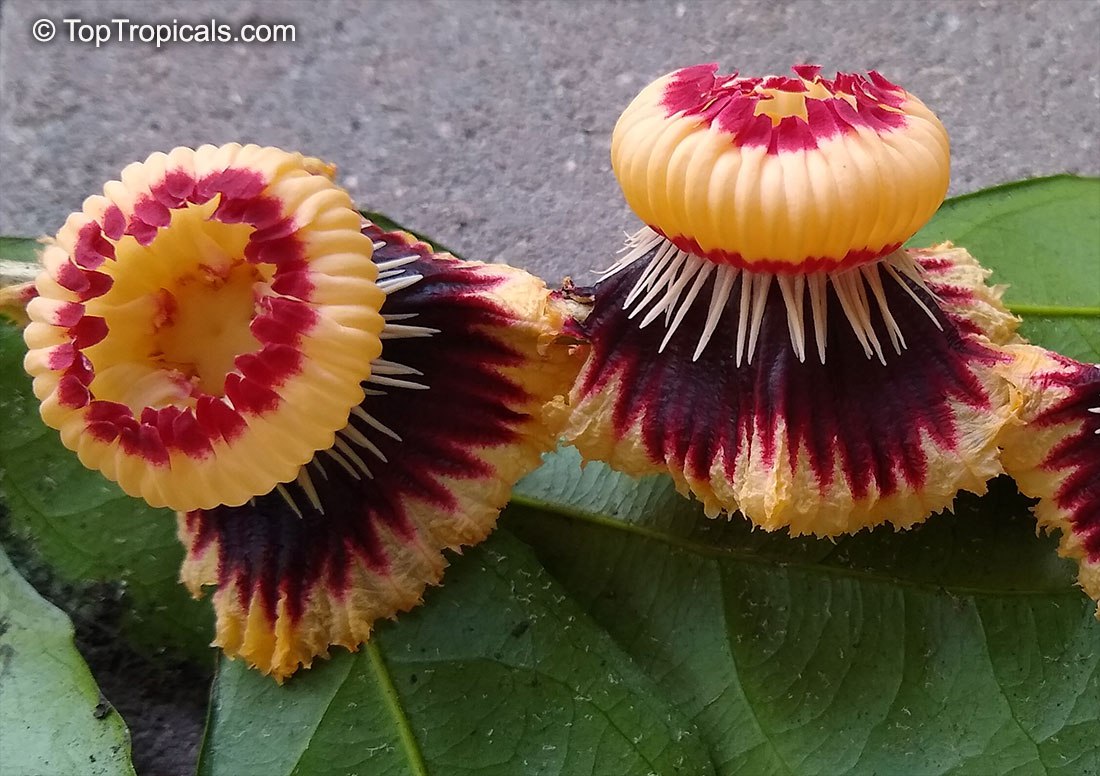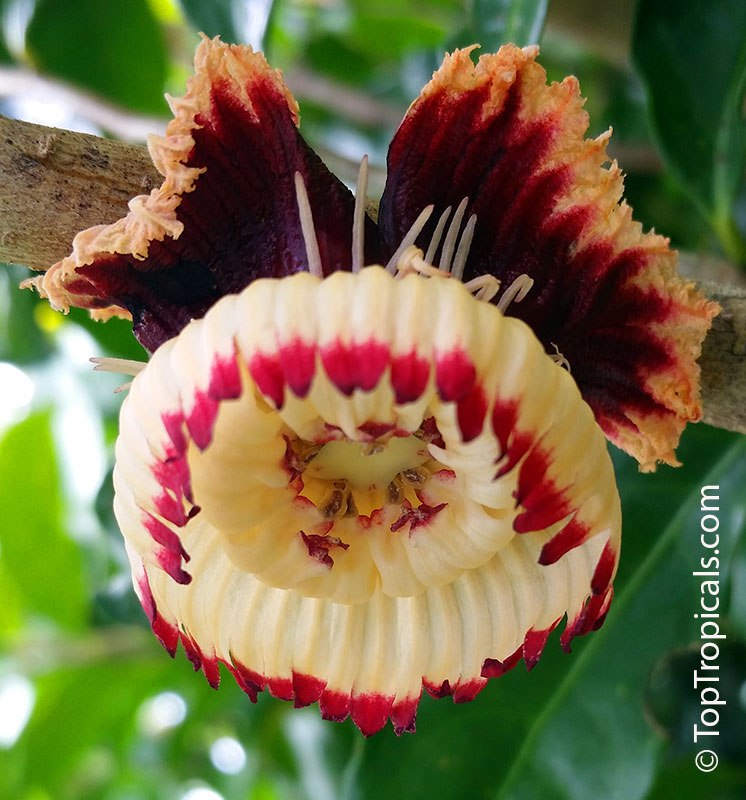Garden Blog - Top Tropicals
Have you ever seen a Half-n-Half Parrots Beak?
Gmelina philippensis variegata - Half-n-Half Parrots Beak
‼️ Just landed: Half-n-Half Parrots Beak - rare variegated form! Limited quantities - first time ever!
- 🐦 We just got our hands on a super rare twist of a beloved classic - Half n Half Parrot's Beak! This is not your average Gmelina philippensis. It's a variegated version you've probably never seen before, and it's ready to steal the show!
- 🐦 Classic Parrot's Beak is already a fan favorite with its whimsical, hanging branches and cartoonish yellow blooms that really do look like parrots mid-laugh. Now imagine all that - with variegation!
- 🐦 Why is it special? Because each leaf is half green, half creamy-white - a stunning two-tone effect . It's got the same iconic yellow parrot-beak flowers, but with a brand-new flair.
- 🐦 Compact growth and ivy-shaped foliage make it ideal for bonsai. The leaves reduce beautifully with training. Develops character as it ages: spiny branches, textured bark, and an artistic form perfect for styling.
- 🐦 Fast grower with a naturally tidy canopy, it produces eye-catching yellow flowers shaped like parrot beaks, hanging in chain-like racemes. This rare form is perfect for collectors, bonsai lovers, or anyone who wants a showpiece plant that sparks conversation.
- 🐦 Note: Gmelina is pronounced "Melina" - the G is silent, but the plant is anything but!
📚Check out the Classic Parrot Beak in earlier post and in the '>Video
🛒 Limited quantity available - grab your Half n Half before they’re gone!
#Butterfly_Plants #Hedges_with_benefits #Nature_Wonders
🔴 Join 👉 TopTropicals
Which epiphytic cactus puts out the biggest bloom show
🌺 Disocactus ackermanni, also called the Red Orchid Cactus, puts on a jaw-dropping show with huge, blazing red flowers that can reach 6 inches wide! It's a cactus that acts nothing like one - and then bursts out in flowers the size of your hand!
🌺 It blooms from Spring through Summer and steals the spotlight every time. The plant grows like a lush, green fern with flat stems that drape and cascade like a living chandelier.
🌺 It may be a cactus, but it loves water and shade - more diva than desert. Native to the tropical forests of Mexico, this epiphyte thrives in a hanging basket and turns heads wherever it grows.
🌺 Why collectors search for it? Because it's rare, eye-catching, and just plain fun to grow. No spines, no drama - just bold flowers and easy charm. This is one of those plants that visitors always ask about. If you're a collector, it's not a want – it's a need.
🛒 Get the Red Orchid Cactus everyone talks about
📚 More about exotic epiphytic cacti:
Epiphyllum oxypetalum - Queen of the Night
Pseudorhipsalis (Wittia) amazonica - Blue Flame
Epiphyllum guatemalense Monstrosa - Orchid Cactus, Curly Locks
#Container_Garden #Shade_Garden #Nature_Wonders
🔴 Join 👉 TopTropicals
Which epiphytic cactus puts out the biggest bloom show
Disocactus ackermanni - Red Orchid Cactus
- 🌺 Disocactus ackermanni, also called the Red Orchid Cactus, puts on a jaw-dropping show with huge, blazing red flowers that can reach 6 inches wide! It's a cactus that acts nothing like one - and then bursts out in flowers the size of your hand!
- 🌺 It blooms from Spring through Summer and steals the spotlight every time. The plant grows like a lush, green fern with flat stems that drape and cascade like a living chandelier.
- 🌺 It may be a cactus, but it loves water and shade - more diva than desert. Native to the tropical forests of Mexico, this epiphyte thrives in a hanging basket and turns heads wherever it grows.
- 🌺 Why collectors search for it? Because it's rare, eye-catching, and just plain fun to grow. No spines, no drama - just bold flowers and easy charm. This is one of those plants that visitors always ask about. If you're a collector, it's not a want – it's a need.
🛒 Get the Red Orchid Cactus everyone talks about
📚 More about exotic epiphytic cacti:
Epiphyllum oxypetalum - Queen of the Night
Pseudorhipsalis (Wittia) amazonica - Blue Flame
Epiphyllum guatemalense Monstrosa - Orchid Cactus, Curly Locks
#Container_Garden #Shade_Garden #Nature_Wonders
🔴 Join 👉 TopTropicals
Is the Sausage Tree from Africa edible?
Despite the tempting name, the sausages that grow on the Sausage Tree don't actually taste like the sausages you're thinking of, but... in a nutshell, they are still edible! Let's dive into the details...
🌭The Sausage Tree (Kigelia pinnata, also known as Kigelia africana) is a striking tropical tree native to sub-Saharan Africa, renowned for its large, sausage-shaped fruits that can grow up to 2 feet long and weigh up to 15 pounds.
🌭While the Sausage Tree's fruit is technically edible, it is toxic when raw. To safely consume the fruit, it must undergo specific processing methods:
🌭Even with these preparations, caution is advised. It's essential to consult with local experts or traditional practitioners before attempting to consume Sausage Tree fruit.
🌭Various parts of the tree, including the fruit, bark, and leaves, have been used to treat ailments such as ulcers, skin infections.
🌭In some African cultures, the fruit is associated with fertility and is used in rituals. The tree's presence is often considered auspicious.
🌭Although the Sausage Tree might not be winning any awards for your dinner table, it's definitely a showstopper in the yard. Think of it as the ultimate conversation starter and the weirdest, most fascinating collectible you'll ever grow!
Drying: The fruit is dried thoroughly to reduce toxicity.
Roasting or Baking: These methods help neutralize harmful compounds.
Fermentation: In some cultures, the fruit is fermented, often with sugarcane juice or honey, to create traditional beverages like muratina in Kenya.
🛒 Grab your Sausage Tree now - impress your guests!
📚 Learn more about Sausage Tree:
Meet the tree everyone's talking about: sausages growing on a tree!
#Nature_Wonders #Trees #Discover
🏵 TopTropicals
Is the Sausage Tree from Africa edible?

Sausage Tree - Kigelia pinnata, fruit
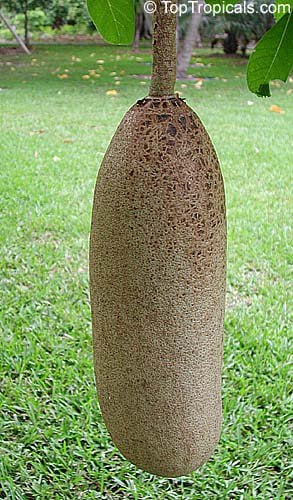
Sausage Tree - Kigelia pinnata, fruit
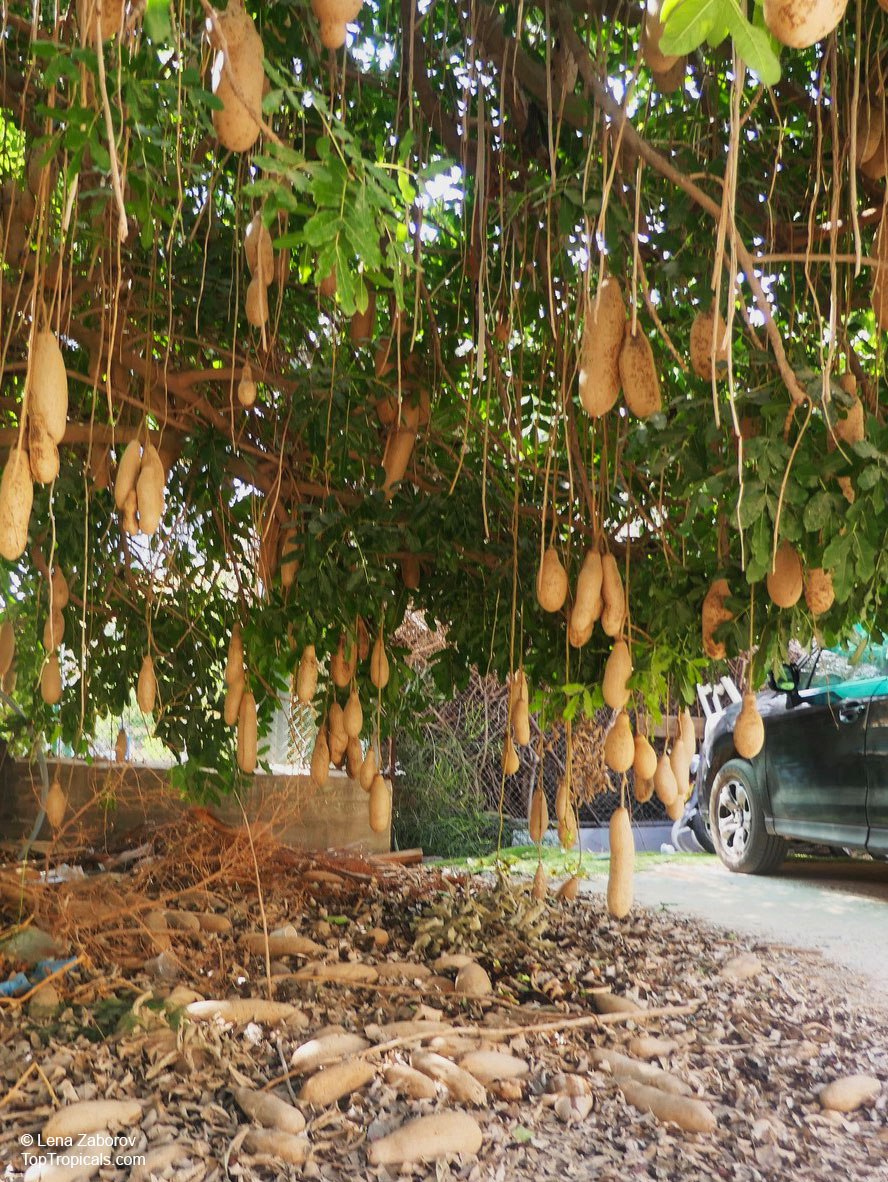
Sausage Tree - Kigelia pinnata

Sausage Tree - Kigelia pinnata, fruit
Despite the tempting name, the sausages that grow on the Sausage Tree don't actually taste like the sausages you're thinking of, but... in a nutshell, they are still edible! Let's dive into the details...
- 🌭The Sausage Tree (Kigelia pinnata, also known as Kigelia africana) is a striking tropical tree native to sub-Saharan Africa, renowned for its large, sausage-shaped fruits that can grow up to 2 feet long and weigh up to 15 pounds.
- 🌭While the Sausage Tree's fruit is technically edible, it is toxic when raw. To safely consume the fruit, it must undergo specific processing methods:
- 🌭Even with these preparations, caution is advised. It's essential to consult with local experts or traditional practitioners before attempting to consume Sausage Tree fruit.
- 🌭Various parts of the tree, including the fruit, bark, and leaves, have been used to treat ailments such as ulcers, skin infections.
- 🌭In some African cultures, the fruit is associated with fertility and is used in rituals. The tree's presence is often considered auspicious.
- 🌭Although the Sausage Tree might not be winning any awards for your dinner table, it's definitely a showstopper in the yard. Think of it as the ultimate conversation starter and the weirdest, most fascinating collectible you'll ever grow!
Drying: The fruit is dried thoroughly to reduce toxicity.
Roasting or Baking: These methods help neutralize harmful compounds.
Fermentation: In some cultures, the fruit is fermented, often with sugarcane juice or honey, to create traditional beverages like muratina in Kenya.
🛒 Grab your Sausage Tree now - impress your guests!
📚 Learn more about Sausage Tree:
Meet the tree everyone's talking about: sausages growing on a tree!
#Nature_Wonders #Trees #Discover
🏵 TopTropicals


